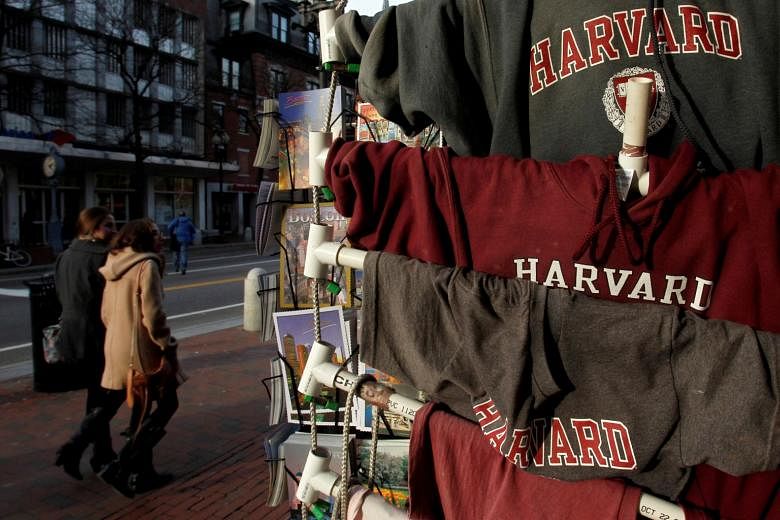The annual US college applications frenzy is upon us - a season when high school students agonise over GPAs and personal essays, praying that they will stand out among throngs of applicants.
Their anxiety is very visible online, popping up on social media and websites that advise students on, for example, "what admission officials discuss behind closed doors" but "may not tell you in the information session".
The degree of bewilderment is not surprising. Colleges themselves have widely diverging views on what makes an ideal applicant.
It's a widespread misconception that applicants have a right to be admitted to the school of their choice if they have higher grades or test scores than other candidates. It is not that grades and scores do not matter - they nearly always do - but colleges are not obligated to choose the students who are deemed most likely to earn high college grades or graduate.
Instead, what counts in admissions depends on the mission of the institution, and that can vary a great deal from school to school.
The State University of New York, for example, strives to "provide to the people of New York educational services of the highest quality, with the broadest possible access, fully representative of all segments of the population". Yale, on the other hand, aims "to seek exceptionally promising students of all backgrounds... to educate them, through mental discipline and social experience, to develop their intellectual, moral, civic and creative capacities to the fullest".
One of those institutions is seeking, in part, to represent the population of New York. The other is seeking the most extraordinary students in the United States. Both make admission decisions accordingly.
Mission statements do not necessarily make it easier for students to understand the nuts and bolts of admissions, but they are vital. A school's admissions policy must flow from its mission.
But by and large, colleges are not doing a good enough job explaining how admissions choices stem from their policy. While most colleges list some of the factors they consider - such as leadership and involvement in extracurricular activities - they need to go further to explain how applicant characteristics are assessed and weighted.
Admissions officers will readily point out that complete transparency is not possible. Colleges that explicitly state their preferences for underrepresented racial groups, for example, risk running afoul of the Supreme Court, and in some cases, state prohibitions.
But right now, the guidance they do give is far too opaque. Consider some of the questions Harvard says it uses to consider applicants: Where will you be in one, five or 25 years? What sort of human being will you be in the future? Are you a late bloomer? Do you have reserve power to do more?
To be clear, these are not questions for the candidates themselves to answer. They are among the questions that the admissions officers ask themselves about prospective students based on their applications. Applicants, for their part, are left to wonder how Harvard admissions officers might infer the answers and what the right answers might be.
And further, how important are these questions relative to more traditional factors, such as grades, test scores and extracurricular activities?
Likewise, the University of California lists intellectual curiosity as a desirable applicant characteristic. That seems reasonable, but how is it evaluated? The university also considers disabilities, difficult personal and family situations, and low income, among other criteria. How much do these factors count? Do students score points for a parental divorce or a childhood illness?
Even those who have a role in making decisions can find this frustrating. A former Berkeley applications reader wrote several years ago that because of the lack of explicit rules for judging candidates, "the process of detecting objective factors of disadvantage becomes tricky".
Sociological research suggests that the fuzzier the admissions criteria, the greater the disadvantage suffered by low-income students and others less familiar with university culture. Thus, admissions officers seeking to diversify freshman classes would benefit from being transparent about expectations. They could start by publishing vignettes to illustrate how admissions decisions are made, explain why certain applicant profiles do or do not make the grade and describe how they identify talented students who fall short in terms of grades or test scores.
Descriptions of the kinds of complex deliberations conducted by real admissions committees would be enlightening to students and their families. Colleges do not need to tell all. But a more comprehensive explanation of what drives their choices would go a long way towards lifting the veil from a system that many regard as an impenetrable mystery.
NYTIMES

